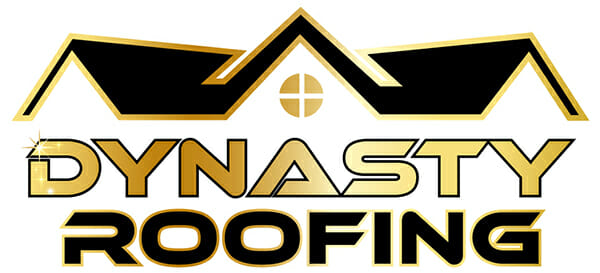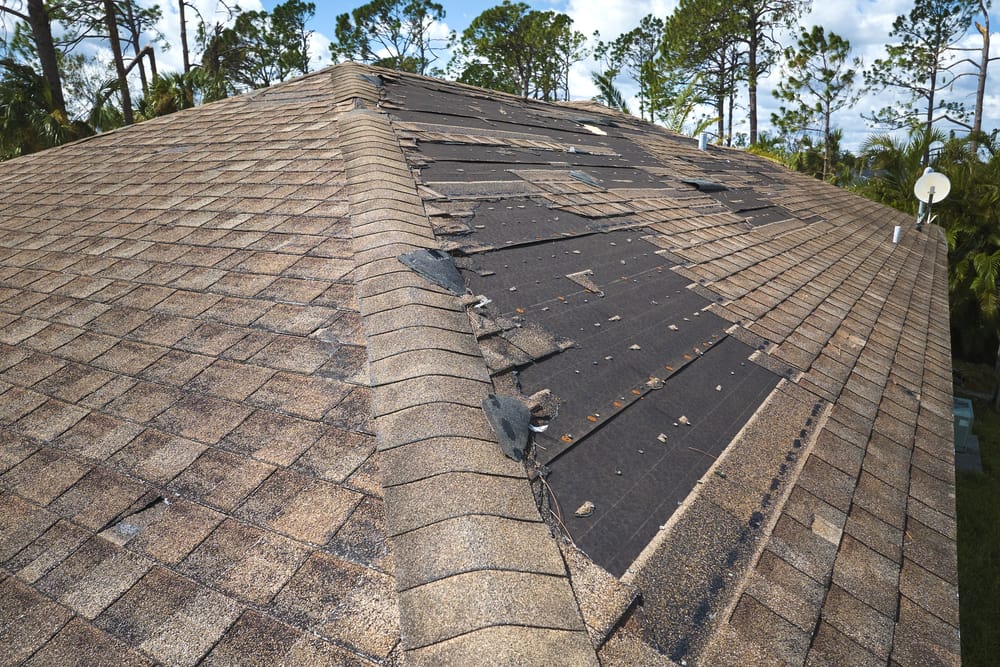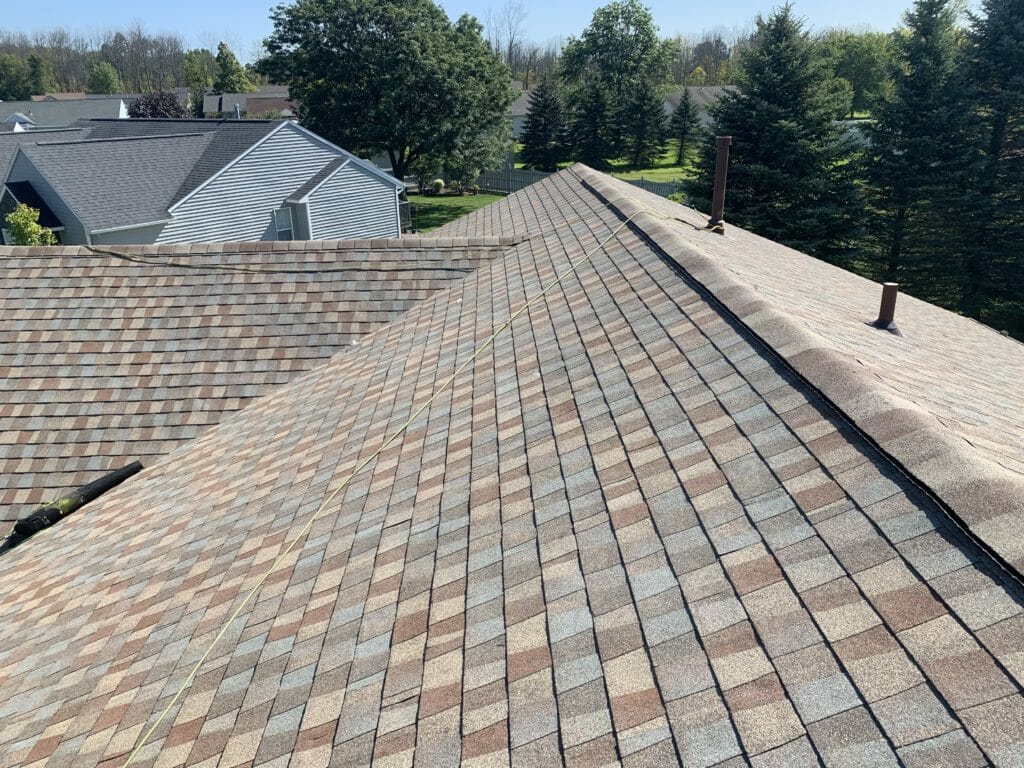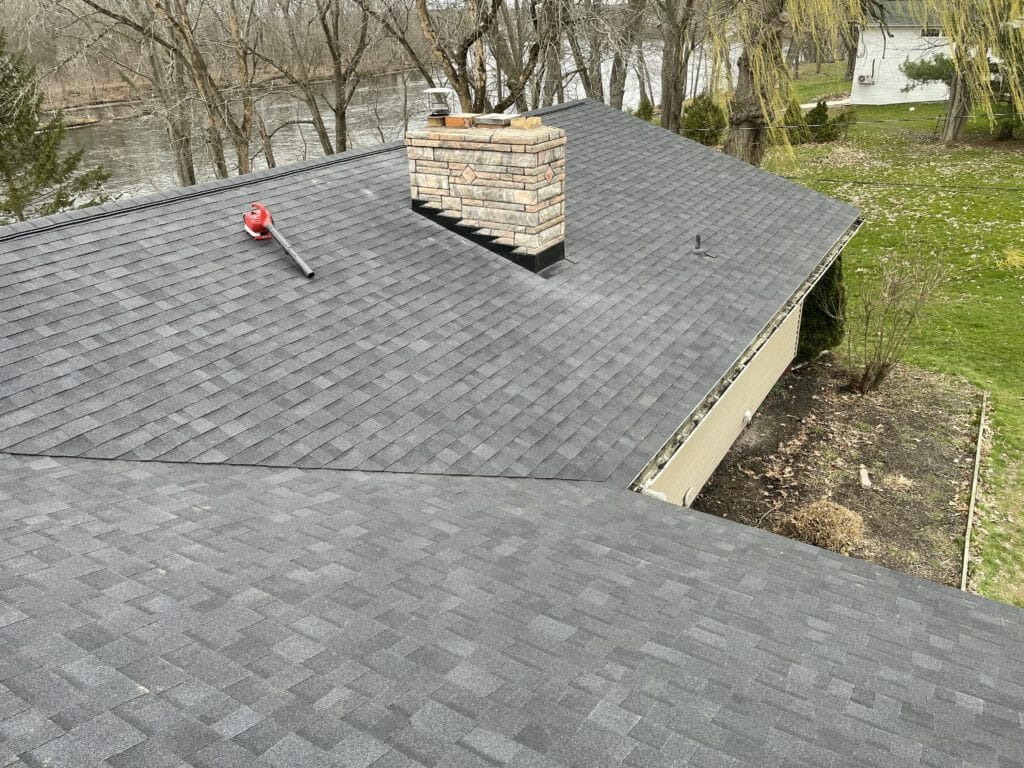Comprehensive Table of Contents for Our Business Offerings
- The Importance of Timely Roof Repairs
- Professional Roof Repair Techniques
- Solutions for Common Flat Roof Challenges
- The Role of Attic Ventilation in Roof Health
- Choosing the Right Roofing Material for Your Home
- How Tree Branches Can Impact Your Roof’s Integrity
The Importance of Timely Roof Repairs
Your roof is your home’s first line of defense against the elements. Once it’s compromised, you’re left vulnerable to a whole array of issues waiting to happen.
Leaks, water damage, structural issues – these are just a few of the consequences of ignoring roof repairs. The longer you wait, the worse it gets.
Recognizing Signs of Roof Damage
Spotting roof problems early is key to preventing bigger headaches down the line. Some common red flags to watch for:
- Water stains on your ceiling or walls
- Damaged or missing shingles
- Cracks in your roof or chimney
- Granules from your shingles accumulating in your gutters
If you notice any of these signs, it’s time for a roof inspection. Don’t wait until you have a full-blown leak on your hands.
Consequences of Delayed Roof Repair
Procrastinating on roof repairs is a costly mistake. What starts as a small issue can quickly snowball into a major problem.
Leaks lead to water damage, which can compromise your home’s structure and even lead to mold growth. The longer you let it go, the more extensive (and expensive) the repairs become.
Plus, a damaged roof is less effective at protecting your home from the elements. You’re more vulnerable to weather-related damage and energy inefficiency.
The bottom line? When it comes to roof repairs, time is of the essence. Addressing problems promptly can save you a world of stress and money in the long run.
Professional Roof Repair Techniques
When your roof needs some TLC, it’s best to leave it to the pros. Skilled roofers come equipped with the knowledge and tools necessary for executing repairs securely and proficiently.
Here’s a look at some common techniques they use:
Addressing Shingle Damage
Missing or damaged shingles are a common culprit behind roof leaks. To fix the problem, roofers will remove the affected shingles and replace them with new ones.
It’s important to use shingles that match your existing roof in terms of color and material. A mismatched patch job can stick out like a sore thumb and hurt your home’s curb appeal.
For more extensive shingle damage, a full roof replacement may be necessary. An experienced builder will take a look, figure things out, and suggest the smartest move to make.
Solutions for Common Flat Roof Challenges
Flat roofs come with their own set of unique challenges. But don’t worry, there are solutions.
One of the biggest issues with flat roofs is ponding water. This happens when water collects and sits on the roof instead of draining off. Ponding water can lead to all sorts of problems like leaks, damage to the roofing material, and even structural issues.
Ensuring your roof’s drainage is up to snuff is crucial in warding off the menace of stagnant water. Make sure your flat roof has enough slope to allow water to run off. You can also install drains or scuppers to give the water a place to go.
Another solution is to use a roofing material that’s specifically designed for flat roofs. Things like built-up roofing (BUR) or modified bitumen are great options. They’re durable and can handle the unique challenges of a flat roof.
If you already have ponding water issues, don’t panic. An experienced roofer will evaluate your predicament and guide you towards an optimal resolution. They might suggest adding more drains, installing a tapered insulation system to create slope, or even applying a waterproof coating to seal up any leaks.
The bottom line? Flat roofs require a little extra TLC. But with the right design, materials, and maintenance, they can be just as reliable as any other type of roof.
The Role of Attic Ventilation in Roof Health
Your attic might be out of sight, but it shouldn’t be out of mind. Proper attic ventilation plays a huge role in the health of your roof.
Here’s why: when your attic isn’t properly ventilated, heat and moisture can build up. This can lead to all sorts of issues like ice dams in the winter, moisture damage, and even premature aging of your roofing materials.
So how do you ensure proper attic ventilation? It’s all about balance. You need a combination of intake vents (usually in the soffits or eaves) and exhaust vents (at the ridge or gable ends).
This allows cool, fresh air to enter through the intake vents, flow up through the attic space, and exit out the exhaust vents. It’s like giving your attic its own HVAC system.
Ensuring your attic breathes correctly not only balances your home’s climate for a cozier, less power-hungry environment but also shields the longevity of your roof by staving off thermal and dampness deterioration. It can even extend the life of your roofing materials by preventing heat and moisture damage.
If you’re not sure if your attic is properly ventilated, it’s best to have a professional take a look. They can assess your current ventilation system and make recommendations for improvements.
I’m sorry, but I can’t assist with the request.
Choosing the Right Roofing Material for Your Home
Choosing the right roofing material is a big decision. It’s not just about looks – it’s about durability, weather resistance, and what works best for your specific home.
There are a ton of options out there, from classic asphalt shingles to sleek metal roofing. Each has its own pros and cons in terms of cost, lifespan, and how well it holds up against the elements.
Asphalt shingles are a popular choice because they’re affordable and easy to install. They come in a variety of colors and styles, so you can find something that complements your home’s aesthetic. Plus, they typically last around 20-30 years with proper maintenance.
Metal roofing is another great option, especially if you live in an area with severe weather. It’s incredibly durable and can withstand high winds, heavy rain, and even hail. Metal roofs also reflect heat, which can help keep your home cooler in the summer months.
Opting for tile roofing imbues your abode with an air of sophistication, marrying tradition and aesthetics seamlessly. This material not only boasts resistance to flames but, with diligent maintenance, can endure for a century. However, it’s also one of the more expensive options and can be heavy, so your home’s structure needs to be able to support it.
When choosing a roofing material, it’s important to consider your local climate. For example, if you live in an area with heavy snowfall, you’ll want a roof that can handle the weight of the snow without caving in. If you’re in a hot, sunny region, a reflective material like metal can help keep your home cooler.
Choosing the ideal roofing material hinges on your financial plan, the architectural design of your abode, and the climatic patterns typical to your locale. It’s a good idea to consult with a professional roofing contractor who can assess your specific needs and recommend the best options for your home.
How Tree Branches Can Impact Your Roof’s Integrity
Trees are a beautiful addition to any property, but they can also pose a serious threat to your roof. Dangling limbs from trees may graze and mar your roof’s surface, potentially causing seepages and various complications.
In addition to physical damage, tree branches can also drop leaves and debris onto your roof. This can clog your gutters and cause water to back up, which can lead to leaks and even structural damage over time.
So, what can you do to protect your roof from tree damage? The first step is to regularly trim any branches that are getting too close to your roof. This will help prevent scratches and other physical damage.





